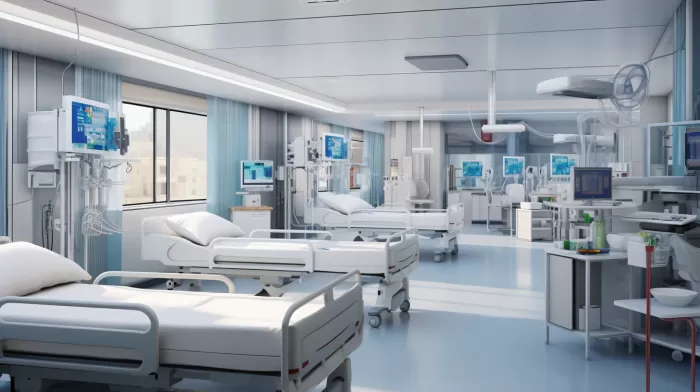Imagine going to the hospital with an urgent medical concern, only to become one of the many victims of a misdiagnosis or a medical mistake that occurs in the intensive care units (ICUs) of hospitals. It’s a frightening thought, but it’s a reality for a significant number of people. According to an analysis by Johns Hopkins patient safety experts, medical mistakes made in ICUs kill as many people annually as breast cancer, with around 40,000 lives lost each year due to these errors.
In this article, we will dive deep into the most common diagnostic mistakes made in ICU, discuss the possible root causes of these errors, and provide suggestions on how to improve patient safety in hospitals.
The Most Common Critical Conditions Misdiagnosed in ICU
The most commonly missed medical conditions in ICU include heart attack, pulmonary embolism (an artery blockage in the lungs), pneumonia, and aspergillosis (a fungal infection that most commonly affects individuals with a weakened immune system). Together, these four conditions accounted for about one-third of all illnesses that doctors failed to detect.
But why are these conditions often missed? Possible reasons include inadequate communication between medical team members, overreliance on technology, and cognitive biases. Professional burnout, time constraints, and a lack of effective teamwork may also contribute to these alarming misdiagnoses.
Inadequate Communication and Collaboration
One major factor in misdiagnosis is inadequate communication between medical team members. In a high-stress environment like the ICU, proper communication is crucial to ensure the accuracy and effectiveness of patient care. Medical professionals need to share essential information about the patient, including medical history, test results, and clinical judgments. Miscommunication or lack of collaboration between team members can result in grave consequences for the patient.
Overreliance on Technology
While advancements in medical technology provide many benefits, overreliance on these tools can also be dangerous. Studies show that many medical professionals tend to ignore their intuition and clinical judgment, relying solely on technology for diagnostic decisions. This can lead to misdiagnoses, as technology is not infallible and should be used as an aid rather than a replacement for proper medical decision-making.
Cognitive Biases
Cognitive biases are inherent mental shortcuts that can lead to errors in judgment. For medical professionals, these biases can significantly impact their ability to make correct diagnoses. Common cognitive biases in healthcare include confirmation bias, anchoring bias, and representativeness bias, among others. Awareness and understanding of these biases are essential for minimizing diagnostic errors.
Professional Burnout, Time Constraints, and Lack of Effective Teamwork
Working in the ICU is both physically and mentally demanding, and many medical professionals experience burnout. This burnout can negatively impact healthcare providers’ ability to make accurate diagnostic decisions, leading to errors.
In addition to burnout, time constraints pose another challenge for ICU professionals. With increasing workloads and pressure to make quick decisions, healthcare providers may not have ample time to review a patient’s medical history or consult with other team members, increasing the risk of a misdiagnosis.
Finally, a lack of effective teamwork can hinder the accuracy of diagnoses in the ICU. When medical professionals work together effectively, they often make better decisions based on a diversity of perspectives and clinical experiences.
How to Improve Patient Safety in Hospitals
To combat the prevalence of diagnostic errors in ICU, hospitals can implement several strategies:
- Improve communication and collaboration: Hospitals must prioritize effective communication between medical team members, implementing standard protocols for sharing important patient information. Promoting a collaborative environment can significantly decrease the risk of diagnostic errors.
-
Encourage critical thinking: It’s crucial for healthcare providers to think beyond technology and use their clinical judgment when diagnosing patients. This involves being aware of potential cognitive biases and recognizing their potential impact on diagnostic accuracy.
-
Promote physician wellbeing: Recognizing and addressing burnout among medical professionals should be a priority for hospital management. Encouraging a healthy work-life balance and providing resources for stress management can improve physicians’ ability to make accurate diagnostic decisions.
-
Provide adequate time and resources: Hospitals must ensure that their staff has enough time and resources to provide accurate diagnoses for their patients. Implementing efficient workflows and team-based care strategies can help alleviate the pressures associated with time constraints and heavy workloads.
-
Train and educate healthcare providers: Ongoing education and training on effective diagnosis methods, awareness of potential biases, and the latest advancements in medical technology are essential for improving diagnostic accuracy and patient safety in hospitals.
In conclusion, patient safety in the ICU is a critical concern that must be addressed with urgency. By understanding the root causes of diagnostic errors and implementing strategies for improvement, we can significantly reduce the risk of medical mistakes in the ICU, ultimately saving more lives.



